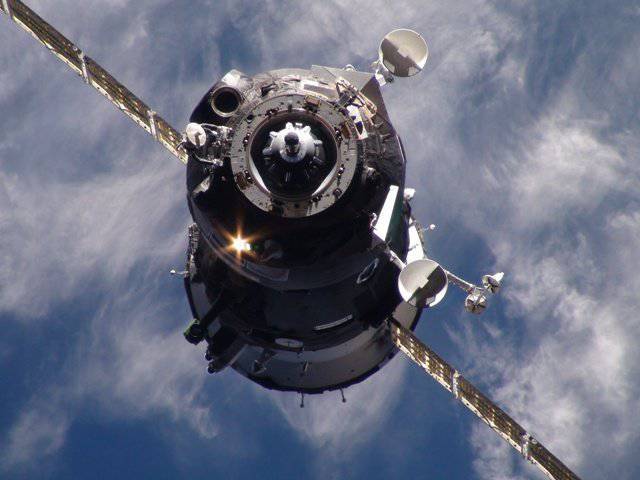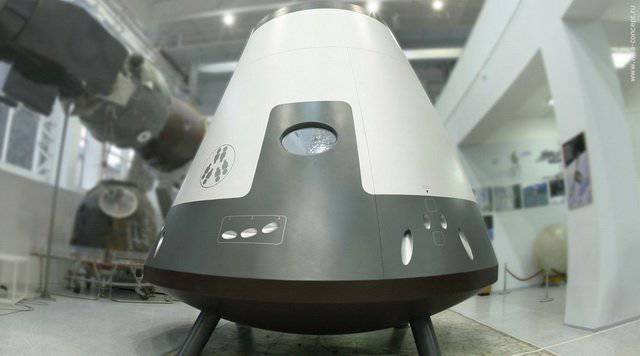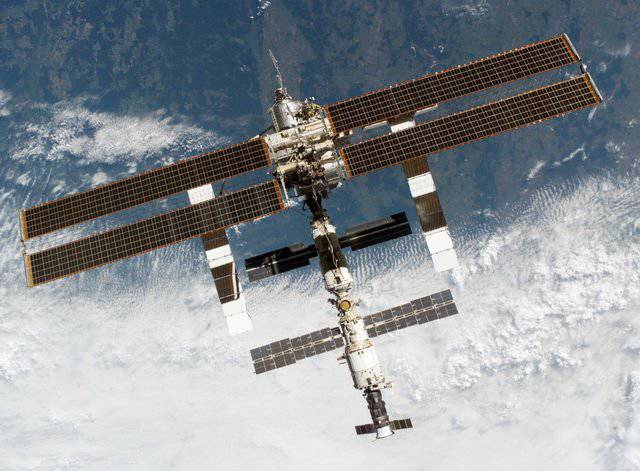RSC Energia has completed work on the creation of a new spacecraft
On Wednesday, December 26, Vitaly Lopota, President of the Rocket and Space Corporation (RKK) Energia, told reporters at Interfax during a press conference about the completion of the technical design of a new Russian manned spacecraft. With sufficient funding, flight tests of new products in the corporation expect to start by 2017 year. According to Vitaly Lopot, the corporation is working on a completely new ship, its layout will probably be shown to the audience already in the framework of the International Aerospace Salon in Moscow MAKS-2013. At the same time, the head of RSC Energia did not provide other details at the meeting with journalists. Earlier it was reported that "Energy" is working on a promising manned transport system, abbreviated as PPTS. The working title of the new generation system is Rus-M. For these works, the corporation allocated about 800 million rubles.
It is assumed that the new manned ship with time will completely replace the Soyuz ships. Launches of the new transporter are supposed to be carried out from the new Russian Vostochny cosmodrome. At the same time, the landing of promising ships should also be carried out on the territory of Russia, currently, the Soyuz spacecraft take off from Baikonur and land on the territory of Kazakhstan as well. Especially for a new ship, a new booster vehicle of increased payload is created, which has the same name “Rus-M”. The plans stipulate that the flight tests of the new rocket will begin in the 2015 year, in order to ensure the possibility of the first flight of the launch vehicle with a manned spacecraft from the 2018 year. At the same time there is information that in order to conduct flight tests of the rocket it will take at least 10 launches.

The outline design for this project was completed in June of 2010, and in 2011, viewers of MAKS-2011 could see the full-size mockup of the new spacecraft. The system consisted of a basic manned spacecraft, as well as a number of modifications made on its basis. The base is the version of the manned transport ship of the new generation (PTK NP). Its main purpose is the maintenance of orbital stations - the delivery of cargo to them, crews, their return to Earth. In addition, this unit can be used as a rescue ship.
The maximum number of crews of the new ship should be 6 people (when flying to the Moon decreases to 4 people). In November 2011, RSC Energia’s Chief Executive Officer, Vitaly Lopota, said that in the new spacecraft the cosmonauts would feel more comfortable than in modern Boeing aircraft. According to the creators of the PPTS (Perspective Manned Transport System), it will be able to deliver cargo weighing up to 500 kg into orbit, the mass of the cargo returned to Earth is the same 500 kg. However, if the device is used as a “truck” and does not deliver people into orbit, the mass of the delivered cargo increases to 2 000 kg.

PPTS modifications will be able to solve various specialized tasks, among which are repair and maintenance of satellites located in near-earth orbits, flights to the Moon, long-term (up to 1 month) autonomous flights in order to conduct various experiments and studies. As well as delivery to orbit and return to Earth of cargo in unmanned cargo-return version.
For the new ship, the modular construction of the base ship in the form of 2-x of the main functionally completed elements - the return vehicle (VA) and the engine compartment (TO) was adopted. A crew of up to 6 people can comfortably be accommodated in the return vehicle. With this crew size, the ship will be able to deliver and pick up loads of up to 500 kg from orbit. The maximum diameter of the return vehicle is 4,4 meters, which is 2 times the diameter used by Soyuz-TMA ships used today. Form BA was chosen taking into account the conditions that allow for improved aerodynamic performance during the performance of the necessary maneuvers. This is very important in terms of bringing PTSV to Russian landing sites.
The use of Russian landfills for planting apparatus requires increased landing accuracy, since there are not so many suitable open spaces in Russia located to the south of the 51,6 latitude degree that would meet all the necessary requirements (nature of soils, topography, restrictions on wind strength, the absence constructions, etc.). It is for this reason that the main differences between the NTC NP and the operated “Soyuz TMA” are in the applied landing system, which, without any exaggeration, can be safely described as unique.
In order to improve the accuracy of the landing apparatus, it was decided to abandon the parachute system, which is subject to wind drift. It is assumed that the VA will go completely to the jet system. "Extinguish" the rate of decline is planned with the help of solid-fuel rocket engines, starting from a height of about 1 000 meters. Landing will be carried out on special depreciated support. At the expense of such a solution, the typical VA “Soyuz” drop on its side after the apparatus touches the ground is excluded. The practical implementation of a “soft” vertical jet landing in a planned area of limited size will allow you to use VA at least 10 times. In addition, the experience of these landings can be used to create specialized lunar and Martian landing modules.

The new spacecraft is made wingless, its aircraft has a truncated conical shape in the upper part and a disposable aggregate motor compartment in the lower part. It is assumed that it will widely use the systems that RSC Energia has designed for the Clipper ship. The length of the ship is 6,1 m., The case diameter is 4,4 m., The mass when performing orbital near-earth flights is 12 t. (When performing flights near the moon orbit, the mass comes to 16,5 t.) - 4,23 t.). The volume of the sealed compartment of the ship - 7,77 cube. It is assumed that materials based on aluminum alloys used in the construction of the apparatus, which have improved strength characteristics and carbon plastics, will reduce the weight of the ship's VA structure by 18-20% and also extend its service life. It is assumed that the new materials and solutions worked out at the PSTS in the future can be used to create new interplanetary ships and automatic spacecraft.
A month ago, it was reported that experienced astronauts would carry out the first flight at the PTK NP, however, according to pilot cosmonaut Sergey Krikalev, the head of the Cosmonaut Training Center (CPC) will begin the preparation for this work only when ". Prior to this, according to him, it is planned to carry out the next stage of modernization of the Soyuz spacecraft (the so-called “Soyuz MS project”), where they are going to try out a number of systems that later will also be used in the PTK NP.
According to Krikalev, the creators of the draft design of the new spacecraft appealed to astronauts for help and listened to their wishes. For example, astronauts were in favor of an increase in habitable volume in comparison with the existing "Unions". They also talked about the ability to control the crew of the ship 1-2. It also raised the question of whether there should be a domestic compartment on the ship or not. It was decided that there was no need for such a compartment when performing short orbital flights.

At the same time, a number of experts refer to the new spacecraft rather skeptical. So a corresponding member of the Russian Academy of Cosmonautics. Tsiolkovsky Yuri Karash, in response to a request from the Vzglyad newspaper, to comment on this news, noted that the model that was shown in 2011 was nothing more than a “beautiful attraction”. According to him, in this work more design solutions than engineering and design. He also wondered where the astronauts were going to fly on the Soyuz successor, while the ISS would be de-orbited.
Yury Karash noted that “there is no sense to make another near-earth station”. “What will Russia do with a similar ship?” The United States will already have its own transport ships ready, the Europeans closely cooperate with the United States, and China also has its own ship. India is also under development. At the same time, it is possible to fly to the ISS on the old "Soyuz", said Yuri Karash in an interview with the newspaper "Vzglyad".
At the same time, in the leadership of the Russian space industry, the ISS are not ready to write off. For example, Lopota, during his communication with journalists, noted that the Russian segment of the ISS will grow due to 3-s of new modules. By the end of 2013, the multifunctional laboratory module is planned to be launched into space, the assembly of which is currently coming to an end. It is reported that inside this module will be 14, and outside 13 universal jobs. In addition, the ISS is planned to be expanded with a universal module, “which will be the base for the development of the Russian station segment”. It is planned to launch into space in the 2016 year. In addition, in the 2016-2017 year it is planned to form another scientific and energy module, which will be the first Russian.
Information sources:
-http: //www.vz.ru/society/2012/12/26/613858.print.html
-http: //www.energia.ru/rus/news/news-2009/public_08.html
-http: //ru.wikipedia.org/wiki
Information